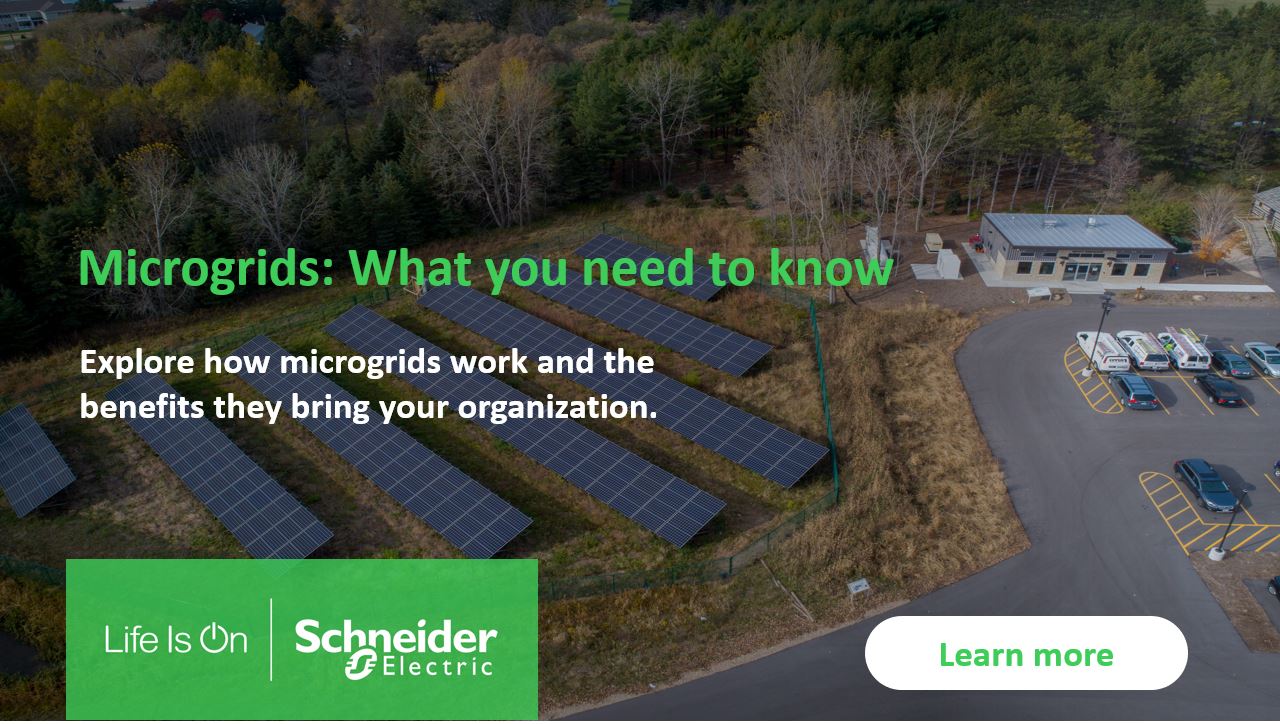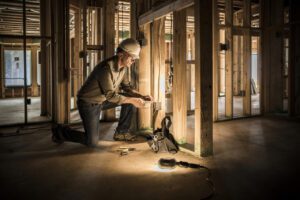In recent years, large-scale data centers, hospitals, ports, and other critical facilities throughout the U.S. were fortified with microgrids that keep electricity flowing, even when the grid goes down.
Grocery stores, pharmacies, and other facilities with fewer energy needs weren’t part of the microgrid conversation — until now.
The COVID-19 pandemic has undoubtedly changed our society’s perspective on which businesses and services are essential. As a result, players within the energy industry are now re-evaluating what or who else needs energy resiliency.
Fortunately, advances in microgrid technology and accessibility to business models have made it so that companies of all sizes can benefit from a self-contained electrical network. In this post, I explain why and how your facility can ensure stress-free reliable energy with a microgrid.
The “why?”: Disruptions we can predict
In 2012, severe weather caused widespread power outages throughout Montgomery County in Maryland, leaving over 250,000 residents without power for days. During the fall of 2019, Pacific Gas and Electric shut off the power to over a million California residents to prevent the spread of wildfires. And, as I write this, Texas is experiencing unprecedented weather-related outages and rolling blackouts due to record-breaking low temperatures.
Weather is getting more severe, and our grid continues to age. For most businesses, it’s not a question of “if” an energy disruption will occur, but “when.” This is where microgrids come into play.
The “how?”: Energy resiliency
Microgrids are self-contained electrical networks that allow you to generate your own electricity on-site and use that energy when you need it. A microgrid system can either directly connect to the utility grid, store excess energy in battery energy storage systems, or “island” to distribute energy locally.
Let’s say the grid powering your facility goes down. In this case, you can use intelligent controls from your system to automatically switch your energy source from the utility grid to the on-site microgrid.
To get a better understanding of how microgrids work, check out this video.
Energy resiliency and sustainability are two obvious benefits of microgrid systems. But what if you also want to lower your energy bills? Microgrids do this, too, allowing you to switch to the most cost-effective energy source at the moment using those same intelligent controls.
The “why now?”: Passing off the worries
You may be wondering: If this technology is so great, why doesn’t every business already have a microgrid system? To answer this question, you have to consider how far technology and business models have evolved.
Historically, the perceived cost and maintenance of a system may have deterred businesses from being a part of the microgrid conversation. Switching energy sources, generating electricity, and islanding are also relatively new ideas to businesses that don’t necessarily have high energy needs.
But over the past couple of years, microgrid technology has advanced significantly. Today, systems are smaller and more scalable than ever before. Likewise, the energy as a service (EaaS) business model has made them accessible, not just to large entities but also to businesses of virtually any size and industry.
EaaS solutions, such as AlphaStruxure™, provide microgrid solutions to large-scale corporations through a performance-based energy service agreement. Small and medium-sized businesses can benefit from a similar model with partners like GreenStruxure.
With EaaS, businesses have zero upfront costs and are not responsible for maintenance, services, or operations. So you get the benefits of energy resiliency and increased sustainability without financial risk or any extra effort.
The “what’s next?”: Connecting with a partner
The challenge of energy resiliency isn’t going away. As a facility manager, identifying your energy goals is the first step toward finding the right solution.
Do you want to integrate on-site renewables for sustainability, lower your energy bill to save money, or guard against the next long-term outage for resiliency? Or, maybe you want to do all three? Once you know what you need, contact a trusted partner who can guide you in the right direction.
Take a deeper dive into the microgrid solution here. If you want to connect about your microgrid options, fill out the contact form at the bottom of the page, and we’ll reach out to you with answers and solutions catered to your business.




